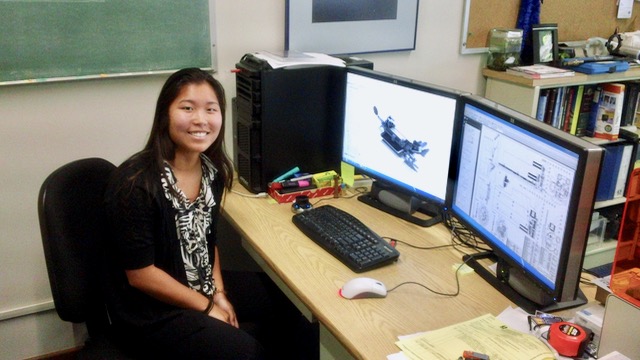
Born and raised in Kane’ohe on the island of O’ahu, Nikki is currently working towards a B.S. in Mechanical Engineering at the University of Idaho with a Pre-Health minor as well as being a Division 1 NCAA athlete for the Women’s Swim & Dive team as a spring-board diver. Nikki loves learning and trying new things. She has an analytical mind, but also has a creative side with a passion for art, design, and nature. She hopes to one day use her engineering career to work along side the medical field or in the field of prosthetics.
Home Island: Oahu
High School:
Institution when accepted: University of Idaho
Redesigning the Cassegrain Guide Camera Mount for the Canada-France-Hawaii Telescope
Project Site: Waimea, Big Island, HI
Mentor: Windell Jones
Project Abstract:
The cassegrain guide camera is used to estimate the guide corrections for the ESPaDOnS and SITELLE instruments while they are used on the Canada France Hawaii Telescope. The guide camera is a critical component of CFHT’s Telescope Control System and is used to keep the target fixed in the field of view during exposures and thus reducing smearing of the target during long exposures. The current guide camera and its supporting hardware are obsolete. Therefore, a new digital camera made by Quantum Scientific Imaging has been purchased to replace the existing camera with a modern equivalent. A mount was designed and fabricated for its implementation at CFHT. This project evaluated multiple configurations of the new camera mount. To establish a baseline design and identify constraints, a Solidworks model of the existing assembly was created. From there, the F8 beam focus movement, possible interference with the neutral density filter wheel motors and optical axis alignment were identified as constraints for the new design. It was found that the camera needed to be positioned on its side and its detector could not be positioned farther than 80.45 mm from the leading edge of the original camera mounting plate. A new camera plate was designed to allow adjustment for the sidewards shift of the camera body to center its detector with the F8 beam optical axis. The new mounting plate was designed to be easily exchanged with the existing camera to allow for a rapid exchange during testing. The final design meets all identified constraints and maintains compatibility with the existing assembly. It is predicted that the new camera will provide increased sensitivity and less centroiding noise. A simulation using the new camera as feedback for the CFHT TCS was performed to explore the impact on the telescope tracking error as a function of correction frequency and filtering of the centroid position.